Gemstone Guide
Vibrant and sparkling, gemstones add colour and brilliance to any jewellery collection. Gemstones are found and appreciated nearly everywhere around the world, and the perfect gemstone has the ability to express one's personal style.
Simply put, a gemstone is naturally occurring form of mineral used for personal adornment. Throughout history, gemstones have represented wealth and power. Today, gemstones are an affordable way to shine.
Simply put, a gemstone is naturally occurring form of mineral used for personal adornment. Throughout history, gemstones have represented wealth and power. Today, gemstones are an affordable way to shine.
Precious vs. Semi-Precious Gemstones
The impression that some gemstones are precious and others are only semi-precious is familiar to those who purchase coloured stones. "Precious" stones were considered the big four - diamond, ruby, sapphire and emerald. These gemstones traditionally commanded higher prices due to their extraordinary colour, brilliance and extreme rarity. All other gemstones were considered "Semi-Precious", as they were thought to be less commercially valuable. Today, however, this distinction is considered insignificant due to the range of quality, availability, size and cost of gemstones in today's marketplace.
Natural, Lab-Created and Simulated Gemstones
Natural gemstones are those mineral varieties found or mined in natural settings. Like diamonds, natural gemstones contain impurities and imperfections that can diminish overall appearance and value.
Lab-created synthetic gemstones usually feature the same molecular composition to their naturally occurring mineral counterparts, but they are grown in a controlled laboratory environment. They are chemically, physically, and optically identical to gems found in nature, and there's really no way to tell them apart. Lab-created gemstones feature the same to better brilliance as a natural gemstone, however, the laboratory cultivation process leads to less impurities and fewer imperfections. Lab-created gemstones don't have the rarity of natural gemstones, which makes them more affordable.
Simulated gemstones are look-alike substitutes for natural gemstones. Because simulated stones are imitation and not made from the same minerals, they cost less and usually have no flaws, but they may not behave in the same way as their natural counterparts with respect to brilliance, sparkle, hardness or longevity.
Peoples uses both natural and high-quality lab-created gemstones in its gemstone jewellery selections. All lab-created or simulated gemstones are clearly indicated in the product descriptions, so as to not deceive the consumer.
Lab-created synthetic gemstones usually feature the same molecular composition to their naturally occurring mineral counterparts, but they are grown in a controlled laboratory environment. They are chemically, physically, and optically identical to gems found in nature, and there's really no way to tell them apart. Lab-created gemstones feature the same to better brilliance as a natural gemstone, however, the laboratory cultivation process leads to less impurities and fewer imperfections. Lab-created gemstones don't have the rarity of natural gemstones, which makes them more affordable.
Simulated gemstones are look-alike substitutes for natural gemstones. Because simulated stones are imitation and not made from the same minerals, they cost less and usually have no flaws, but they may not behave in the same way as their natural counterparts with respect to brilliance, sparkle, hardness or longevity.
Peoples uses both natural and high-quality lab-created gemstones in its gemstone jewellery selections. All lab-created or simulated gemstones are clearly indicated in the product descriptions, so as to not deceive the consumer.
Mohs Scale of Mineral Hardness
Created by German geologist and mineralogist Friedrich Mohs, the Mohs scale determines hardness based on the ability of a harder mineral to scratch a softer mineral. For example, a diamond (hardness = 10) will scratch garnet (hardness = 6.5 -7.5), but not the other way around. Therefore, a diamond is harder than garnet. Harder stones are best for jewellery that's designed to be worn often. There are other ways of judging hardness, but the Mohs scale continues to be used in the gemstone and mineral industry.
| MOHS SCALE OF MINERAL HARDNESS | |||
|---|---|---|---|
| MOHS RATING | MINERAL | SCRATCH TEST RESULTS | JEWELLERY USE |
| 1 | Talc | Very soft; used in talcum powder. | No |
| 2 | Gypsum | Very easily scratched; used in plaster. | No |
| 3 | Calcite | A copper penny will scratch it. | No |
| 4 | Flourite | A steel file will scratch it. | Yes |
| 5 | Apatite | A steel file will scratch it if pressed hard. | Yes |
| 6 | Feldspar | Will scratch a steel file. | Yes |
| 7 | Quartz | Will scratch a glass plate and all previous. | Yes |
| 8 | Topaz | Will scratch unglazed porcelain and all previous. | Yes |
| 9 | Corundum | Will scratch all but diamond. | Yes |
| 10 | Diamond | Will scratch everything. | Yes |
Gemstone Colour, Clarity, Carat and Cut
Like diamonds, gemstones are graded according to specific factors.
COLOUR - Colour is also known as hue. The colour of the gemstone affects its value and how it shows in the jewellery. Generally clear, medium-tone, intense and saturated colours are the most preferred. Avoid stones with colour that is too dark or muddled. The brighter and more vivid the colour, the better.
CLARITY - Clarity is the appearance of inclusions or imperfections in the gem. After colour, gemstone clarity is the next most important factor. Clear, transparent gemstones with no visible flaws (inclusions) are the most valued. Clarity can be difficult to judge, but if flaws aren't visible in the face-up position, then they rarely matter. Some gemstone varieties, such as emerald and red tourmaline, are rarely seen without inclusions. It is important to consider clarity within the gemstone variety, and not against other gemstones.
CARAT - Gemstones are sold by weight, not by size, and, like diamonds, prices are calculated per carat. It's important to recognize that some gems, like rubies, are denser than others, like emeralds, so similarly sized stones of different varieties may differ greatly in cost. In addition, larger stones of some varieties can be quite rare and much more expensive - such as ruby, emerald, sapphire and tourmaline.
CUT - Cut is an important factor in determining a stone's beauty and perceived value when it is set in gemstone jewellery. A good cut is something that may not cost more but can add or subtract substantial beauty. A well-cut faceted gemstone evenly reflects light back across its surface area when held face up. Many different cut shapes are available, and it's important to consider cut in relation to the jewellery style you're considering. The best way to judge cut is to look at similar gemstones next to each other.
COLOUR - Colour is also known as hue. The colour of the gemstone affects its value and how it shows in the jewellery. Generally clear, medium-tone, intense and saturated colours are the most preferred. Avoid stones with colour that is too dark or muddled. The brighter and more vivid the colour, the better.
CLARITY - Clarity is the appearance of inclusions or imperfections in the gem. After colour, gemstone clarity is the next most important factor. Clear, transparent gemstones with no visible flaws (inclusions) are the most valued. Clarity can be difficult to judge, but if flaws aren't visible in the face-up position, then they rarely matter. Some gemstone varieties, such as emerald and red tourmaline, are rarely seen without inclusions. It is important to consider clarity within the gemstone variety, and not against other gemstones.
CARAT - Gemstones are sold by weight, not by size, and, like diamonds, prices are calculated per carat. It's important to recognize that some gems, like rubies, are denser than others, like emeralds, so similarly sized stones of different varieties may differ greatly in cost. In addition, larger stones of some varieties can be quite rare and much more expensive - such as ruby, emerald, sapphire and tourmaline.
CUT - Cut is an important factor in determining a stone's beauty and perceived value when it is set in gemstone jewellery. A good cut is something that may not cost more but can add or subtract substantial beauty. A well-cut faceted gemstone evenly reflects light back across its surface area when held face up. Many different cut shapes are available, and it's important to consider cut in relation to the jewellery style you're considering. The best way to judge cut is to look at similar gemstones next to each other.
Gemstone Care and Cleaning
The very best way to keep your gemstone jewellery clean is to bring it in to your local Peoples Jewellers store any time for a free cleaning and inspection. We're happy to keep your jewellery bright and shiny, and our expert Jewellery Consultants understand the best cleaning method for your jewellery. However, should you choose to clean your jewellery yourself, here are a few things to keep in mind:
- Start with the mildest treatment first.
- Use a jewellery polishing cloth to gently wipe over the areas that need a polish. If you don't have a polishing cloth, any cotton or microfiber fabric will work. You might even use an old cloth diaper.
- Do not use facial tissue or paper towels, as the fibers in paper can scratch your gemstone.
- For best results, use a non-detergent soap and warm water to clean your jewellery.
- Remember, if you clean your jewellery in a sink to be sure to cover the drain hole with a wash cloth. You don't want your gemstone investment to fall down the drain!
- There are ultrasonic jewellery cleaners that can be used at home, but check to make sure your gemstone can withstand such cleaning.
- Remember, pearls are not gemstones! Learn about caring for your pearls here.
Types of Gemstones
Prized for their beauty, durability and rarity, gemstones are the perfect way to add a personal touch to your jewellery collection. From their meaning to their composition, learn more about some of the most popular gemstones used in jewellery.
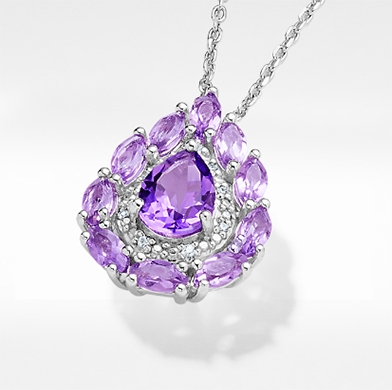
Amethyst
Amethyst is prized for its rich purple hue as well as its healing and protective properties. Coming in at a 7 on the Mohs hardness scale, amethyst is suitable for jewellery that is worn every day.
SHOP AMETHYST JEWELLERY
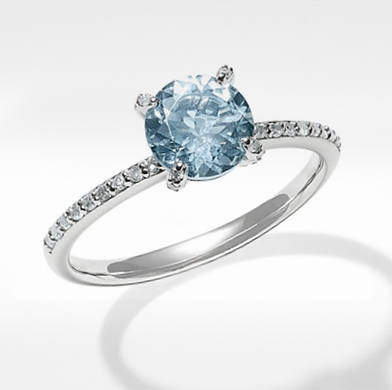
Aquamarine
With its striking ice-blue colour that can appear colourless at certain angles, aquamarine is a unique gemstone that some believe has the power to bring foresight to those who wear it. At 7.5-8 on the Mohs scale, it’s suitable for everyday wear.
SHOP Aquamarine JEWELLERY
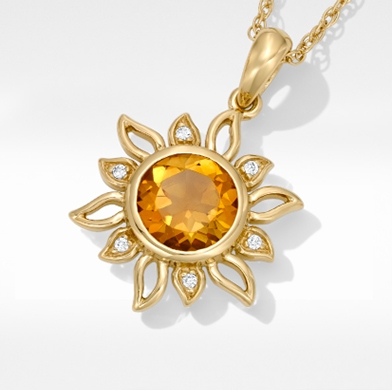
Citrine
Prized for its vibrant yellow colour that ranges from pale to deep golden-orange, citrine is believed to bring hope to anyone who wears it with a unique ability to promote relaxation. At a 7 on the Mohs scale, citrine is relatively durable.
SHOP Citrine JEWELLERY
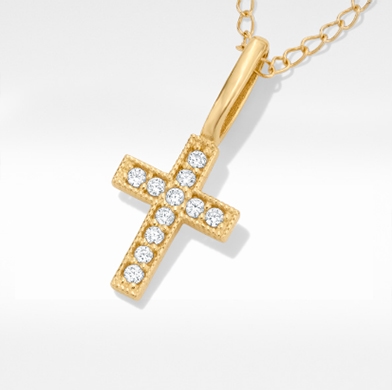
Cubic Zirconia
Cubic zirconia is a manufactured diamond alternative made up of a crystalline form of zirconium dioxide. Used in all types of jewellery, from rings to earrings to necklaces, cubic is versatile and easy to work with. While it is less brilliant and reflective than a natural diamond, cubic zirconia is the more affordable option if a natural diamond isn’t in the budget.
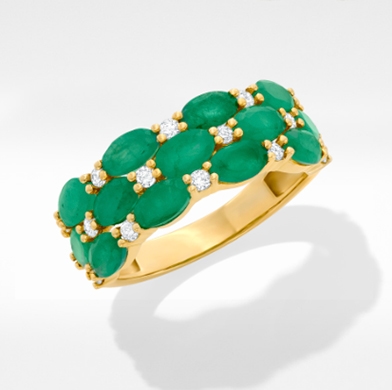
Emerald
One of the most valuable gemstones on the market, emeralds can be even more expensive than diamonds. Ranging from pale green to bluish-green, they were a favourite of Cleopatra. At 7.5 to 8 on the Mohs scale, emeralds are suitable for all types of jewellery.
SHOP Emerald JEWELLERY
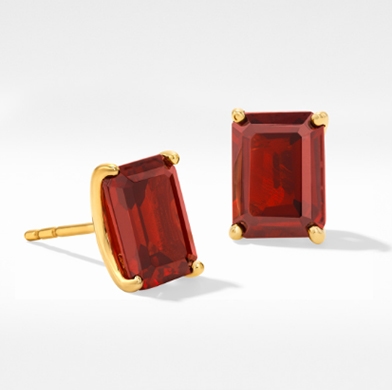
Garnet
The traditional birthstone for January, the garnet is a classic gemstone with roots stretching back to the Ancient Egyptians. Available in almost every colour, with the most popular being red, a garnet ranks at a 7 on the Mohs scale, making it a popular choice for most jewellery.
SHOP Garnet JEWELLERY

Jade
Known for its toughness and durability, jade has historically been used for a wide variety of things, from weapons to ornaments to jewellery. The Maori, Ancient Egyptians, and the Chinese valued jade as a source of wisdom. It can come in many colours, but the most recognized is green, which represents the heart chakra.
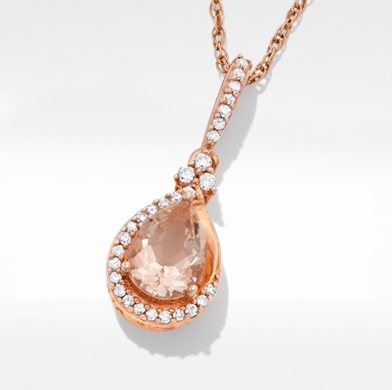
Morganite
With a hue ranging from soft peach-pink to violet-pink, morganite is said to be the gemstone of the universal heart. At a 7.5 – 8.0 on the Mohs scale, morganite is a popular engagement ring gemstone, either on its own or paired with diamonds.
SHOP Morganite JEWELLERY
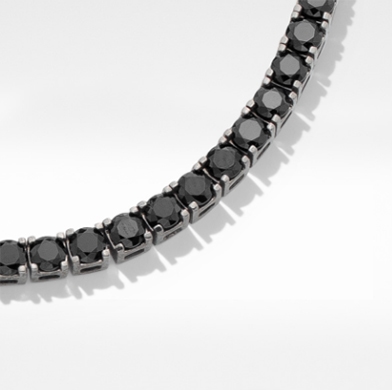
Spinel
Ranging from violet and blue to orange, pink, red, and even black, spinel is a lesser-known gemstone that has been called “History’s Most Under-Appreciated Gem”. It rates an 8.0 on the Mohs hardness scale, so spinel is just as suitable for jewellery as more popular gems like rubies and sapphires.
SHOP Spinel JEWELLERY
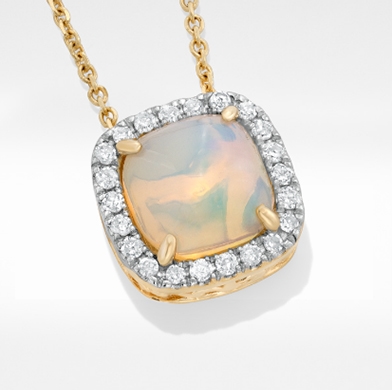
Opal
Considered symbols of hope, purity and truth, there is no gemstone quite like the iridescent opal. Exhibiting multi‐coloured flashes of light when viewed from different angles, each opal is unique. At 5.0 – 6.5 on the Mohs hardness scale, they are more delicate than some other gemstones and should be treated with care.
SHOP Opal JEWELLERY
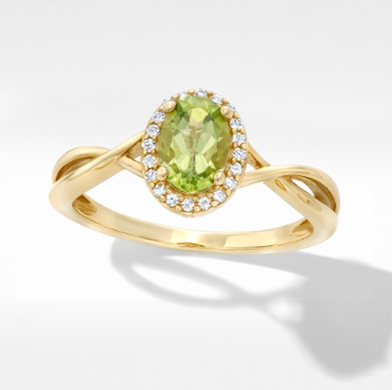
Peridot
Ranging from soft, pale green to olive green, peridot is a distinct gemstone with a long history. The birthstone for August, peridot is said to offer protection from deception and provide inspiration to anyone who wears it. At a 6.5 – 7.0 on the Mohs scale, peridot is a popular choice for everyday wear.
SHOP Peridot JEWELLERY
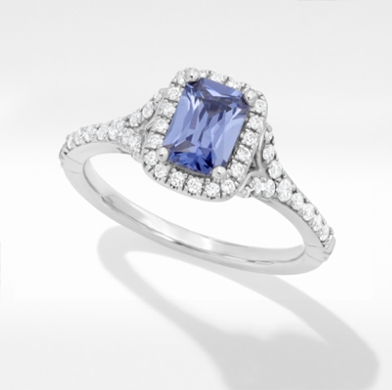
Tanzanite
First discovered in 1962, tanzanite has been gaining in popularity as an alternative to diamonds in engagement rings. It ranges from light to dark violet-blue and is coveted by those who have an eye for the elegant and unusual. At 6.0 – 7.0 on the Mohs hardness scale, tanzanite isn’t as durable as a diamond and should be handled with care.
SHOP Tanzanite JEWELLERY

Topaz
From Ancient Greeks to Renaissance Europeans, topaz has been a popular gemstone for centuries. With a wide colour range including blue, green, purple, yellow, orange and red, topaz is a versatile and affordable option for jewellery. At 8.0 on the Mohs hardness scale, topaz is a very durable gemstone that works in all styles of jewellery.
SHOP Topaz JEWELLERY
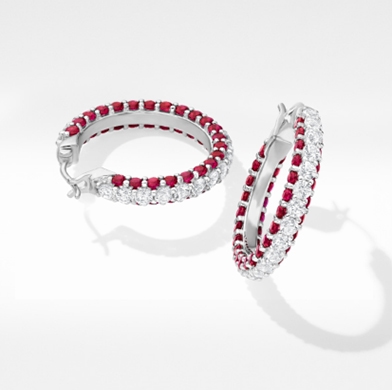
Ruby
One of the four precious gemstones and the birthstone for July, rubies hold the title of “King of the Gems”. Ranging from deep red to pink to brownish hues, a ruby is known for its vibrancy and association with love and passion. Coming in at 9.0 on the Mohs hardness scale, rubies are perfect for jewellery.
SHOP Ruby JEWELLERY
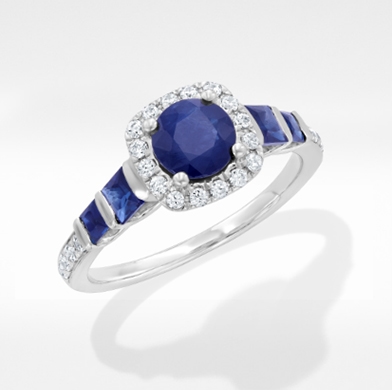
Sapphire
One of the four precious gemstones and the birthstone for September, sapphires are known for their signature blue colour, but they also come in violet, green, yellow, pink, orange, and white. At a 9.0 on the Mohs hardness scale, sapphires are a practical—and beautiful—choice for all types of jewellery.
SHOP Sapphire JEWELLERY
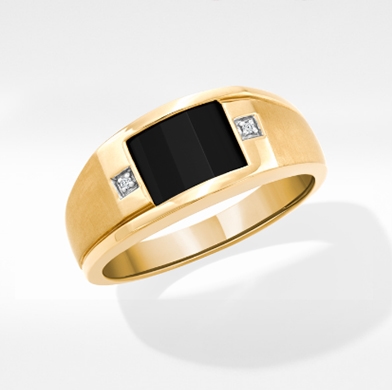
Onyx
While generally thought of as solid black, onyx actually ranges from white to black and may have white bands or ribbons. At 6.5 – 7.0 on the Mohs hardness scale, it’s a little less durable than other gemstones but still suitable for everyday wear.
SHOP Onyx JEWELLERY
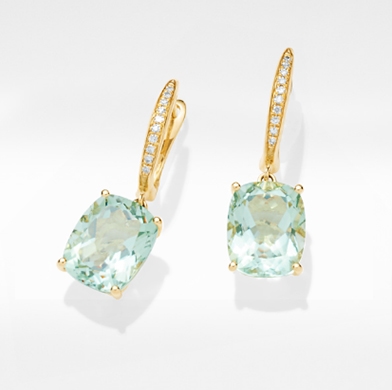
Quartz
The most abundant of all minerals on earth, there are many different gemstones that are variations of quartz, including amethyst and citrine. Pure quartz is clear and colourless but can also range from pale pink to rich black. With a rating of 6.5 – 7.0 on the Mohs hardness scale, quartz is generally suitable for everyday wear.
SHOP Quartz JEWELLERY


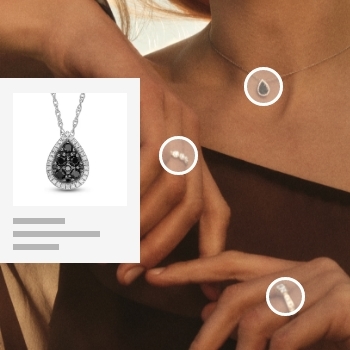


 They will be on video but won't see you.
They will be on video but won't see you. Make sure to enable your mic if prompted.
Make sure to enable your mic if prompted. Language:
Language:

